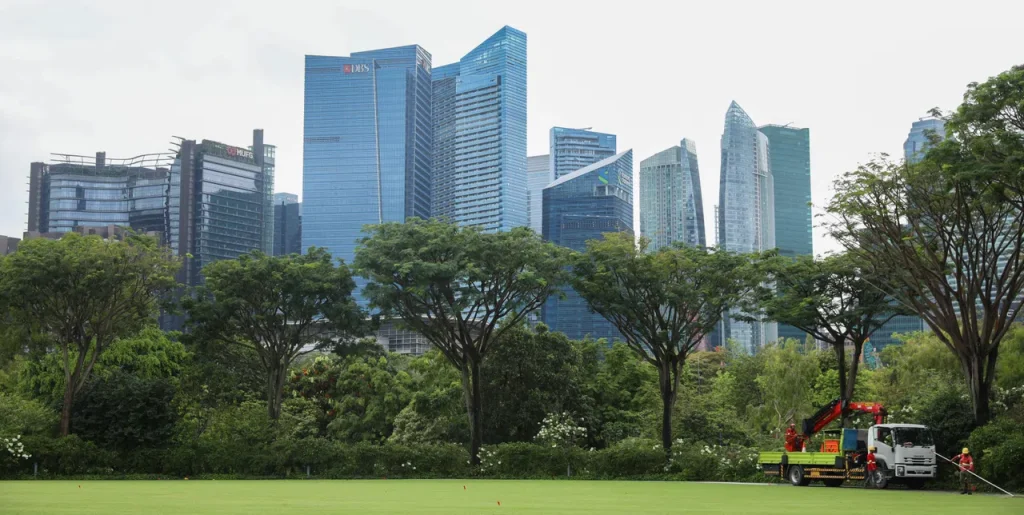BLENDED finance has been widely championed as a key pathway to decarbonising developing Asian countries, not least among policymakers in the region. However it has been noted of late that this innovative avenue of financing has “fallen short of its promise”.
Over the past 15 years, annual volumes of blended finance have been stagnant at around US$15 billion, with only 38 per cent sourced from private financing. Given the projected need of around US$9 trillion by 2030 for climate finance alone, the concern raised is not unfounded, as achieving this lofty target needs significant involvement from private financiers.
Convergence, the global network for blended finance, defines the approach as “the use of catalytic capital from public and philanthropic sources to increase private-sector investment in sustainable development”.
The Organisation for Economic Co-operation and Development sees it as “the strategic use of development finance to mobilise additional finance towards sustainable development in developing countries”, due to the challenges in attracting private capital as the risk premium is usually too high, particularly for longer-term projects. Hence, entities such as development financial institutions (DFIs) and philanthropies are crucial to provide the initial cushion needed for private-capital participation.
However, as the International Finance Corporation notes, it is crucial to ensure that the development finance provided uses the least amount of concessional funds necessary to mobilise private resources. This is in line with Principle 2 of the DFI blended finance principles, that the concessional finance should act as only a catalyst to help develop the market. This has been borne out in practice, where around US$2.5 billion of concessional capital helped finance more than US$13 billion of project costs, according to a March 2023 update by a group of DFIs.
However, the promise of scale has yet to be borne out, with no significant dent as yet on the global needs for sustainable finance, and, in particular, climate finance. That would require active involvement with institutional investors, such as sovereign wealth funds, global insurance entities, asset managers, pension funds and private equity and credit funds, that invest on behalf of their clients. They manage over US$70 trillion of investable assets, and are hence the most relevant segment for private-sector mobilisation.
A NEWSLETTER FOR YOU

Friday, 12.30 pm
ESG Insights
An exclusive weekly report on the latest environmental, social and governance issues.
An important requirement is a rapid improvement in the financial markets infrastructure of developing countries. Second, there is a need to design portfolio investment structures instead of lending at individual project levels, so that the investments are meaningful. Finally, to ensure that the capital flow is sustainable and repeatable, it is critical to set up credible monitoring and verification mechanisms that ensure the integrity of the underlying projects. Let us look at these requirements in detail.
The financial markets in developing countries have become increasingly aligned to international standards over the last two decades.
The 1997 Asian financial crisis as well as the 2008 global financial crisis highlighted the need for robust market infrastructure. To encourage capital flows, regulators have taken a more pragmatic view on foreign exchange and fixed-income markets. Derivative instruments such as non-deliverable forwards, which were previously anathema to many central banks, are now being embraced as efficient hedging mechanisms. Government bond markets have also deepened with more offshore participants, following their inclusion in global bond indices.
However, local currency bond markets in most developing countries are still limited to a few large issuers, and secondary market liquidity is a challenge.
In addition, close-out netting regulations have still not been fully implemented in a number of Asian countries, though surveys indicate that this is an important tool to manage credit risk exposure and increase liquidity.
DFIs play a key role in bringing about these market reforms through their capacity-building and technical assistance programmes with the various governments and central banks.
These reforms, if carried out, will increase confidence in the institutional investor community to commit significant long-term capital. However, they are less likely to invest in standalone projects, as that is usually the domain of banking entities in the region.
This creates a role for financial intermediaries that can structure customised portfolio investments.
The European Banking Federation has created a securitisation framework which can be replicated as a best practice in Asia. The intermediaries can embed hedging mechanisms to mitigate foreign exchange and interest-rate risks which may not be palatable to investors. These structures provide investors with their required level of risk participation, while simultaneously de-risking the balance sheets of regional and local banks and freeing up capital. Blended finance plays a key role here as philanthropies and DFIs can be the investors in the riskiest parts of these structures.
In addition, a number of taxonomies have been developed in the region, such as the Singapore-Asia Taxonomy for Sustainable Finance and the Asean Taxonomy, which can be used to evaluate the projects in the portfolio to ensure that the proceeds are being used for sustainable purposes.
Greenwashing has been one of the key impediments to developing scale in sustainable finance. Hence at a firm level, it is important for borrowers to determine key performance indicators (KPIs) and ensure their independent monitoring.
While large corporations in the region have extensive resources to design appropriate KPIs and engage external assurance firms to independently verify their performance, particularly around Scope 1, 2 or 3 emissions, it is much harder for small and medium-sized enterprises to do the same. Hence third-party advisory firms, which help companies conduct assessments and set relevant targets, are growing in importance.
Some organisations, such as LowCarbonSG from Singapore, are also developing digital tools that help companies measure their emissions and thus monitor their performance.
Scaling up these resources across the region will also help lenders, particularly local and regional banks, to significantly grow their sustainability-linked lending portfolios, and correspondingly create more assets that can be securitised to achieve the scale needed for interest from institutional investors.
The benefits of blended finance have been well documented, but the critique around scale cannot be ignored. While the participation of DFIs and philanthropies is indeed critical to ensure viability of many projects, these efforts must translate to meaningful impact on the environment in order to achieve the Paris Agreement goals.
As Asia has seen a sharp uptick in extreme weather events and their consequences, the region’s economies must come together and create an enabling environment to attract the institutional investments that can make a difference.
The writer is a financial sector professional who has worked in Singapore, Hong Kong and India. He has a keen interest in following current trends in sustainable finance.


